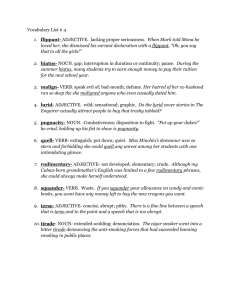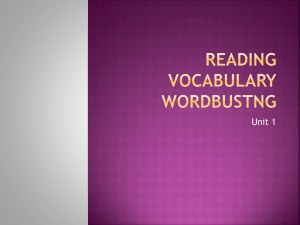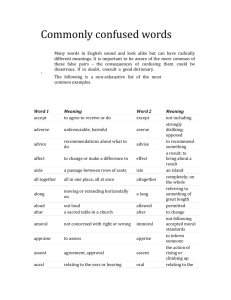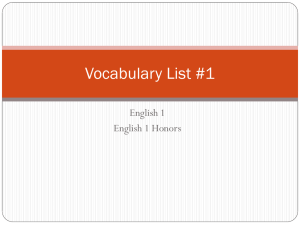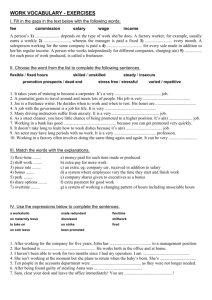The use of 比
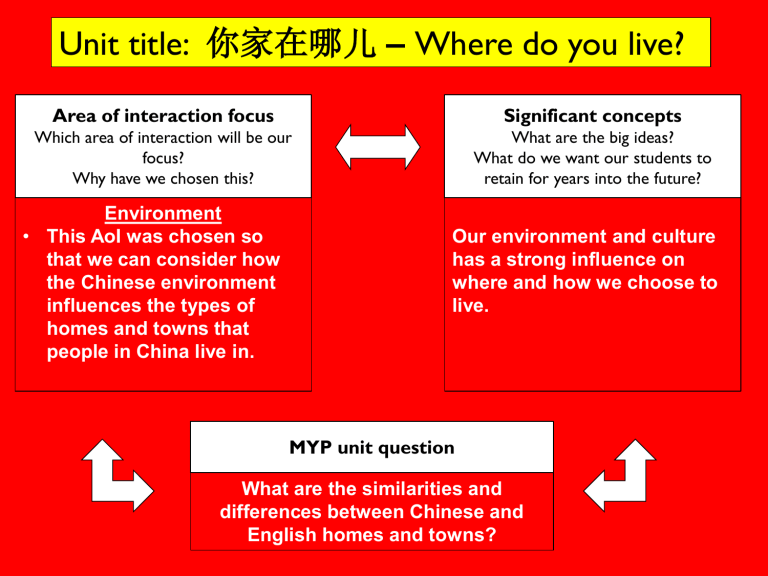
Unit title: 你家在哪儿 – Where do you live?
Area of interaction focus
Which area of interaction will be our focus?
Why have we chosen this?
Environment
• This AoI was chosen so that we can consider how the Chinese environment influences the types of homes and towns that people in China live in.
Significant concepts
What are the big ideas?
What do we want our students to retain for years into the future?
Our environment and culture has a strong influence on where and how we choose to live.
MYP unit question
What are the similarities and differences between Chinese and
English homes and towns?
1.
卧室
2.
浴室
3. 书房
4.
花园
5.
房子
6.
厨房
7. 客厅
8.
厕所
9.
饭厅
Match the picture to its Chinese translation – without your books!
G
H
B
D
C
E
F
A
D
G
B
H
E
C
F
I
A
I
My house
Learning objectives:
1. Use the
比
structure to compare rooms in the house.
bǐ
比
compare
1.
X + 比 + Y + Adjective
2.
Don’t use 很!
3.
得多 / 多了
X + 比 + Y + Adjective
我
比
弟弟高
.
I am taller than my little brother.
X + 比 + Y + Adjective
客厅
比
饭厅大
.
The kitchen is bigger than the dining room.
X + 比 + Y + Adjective + 得多 / 多了
我的花园
比
他的花
园美丽
得多 .
My garden is much more beautiful than his garden.
X + 比 + Y + Adjective + 得多 / 多了
妈妈的书房
比
爸爸
的书房小
多了 .
Mum’s study is much smaller than
Dad’s study.
bǐ
The use of
比
比 is used to make comparisons. The structure is: x + 比 + y + Adj
There is no 很 in a comparison sentence but if we want to add emphasis we use
得多 or 多了 after the adjective.
The use of
比
Workbook – pg. 30, ex. 1
EXT: Using the same 比 structure, what other way can you say each sentence by changing the adjective.
The use of
比
1. Find a person who has the translation of your Chinese sentence and your English sentence –write their names down.
2. Once you have found the second person, write in your books a 比 sentence to describe how you compare to that person.
Some adjectives you might like to use :
美丽 高 矮 好看 小
聪明 瘦 漂亮 大
http://english.cntv.cn/program/natureandsci ence/20100504/103627.shtml


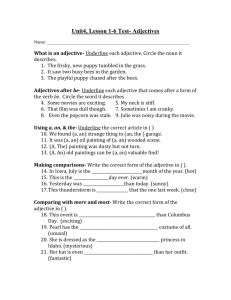
![[in-trin-sik, -zik] adjective](http://s3.studylib.net/store/data/007783849_2-8abe95ddf714edf92a801e2da5d38cad-300x300.png)
